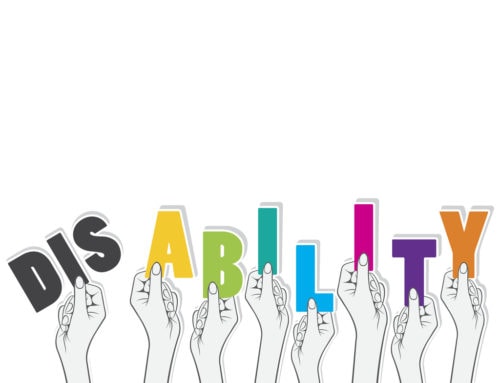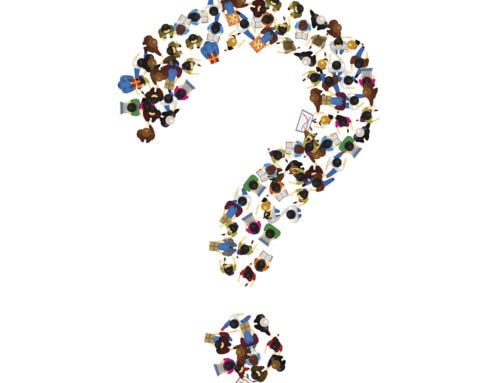Dunbar’s number: the idea that human beings have a cognitive limit to the number of close relationships (about 150) they can maintain; theory proposed by evolutionary psychologist Robin Dunbar of the University of Oxford.
*** TROVELOG ***
It also turns out there’s a maximum number of people you can maintain relationships with at any given time. That number is about 150, known as Dunbar’s Number—after Robin Dunbar, the University of Oxford professor who discovered the pattern researching how primates act in groups. In the world of Homo sapiens, Prof. Dunbar again and again finds examples of people naturally finding groups of about 150.
. . .
At first, some thought these social networks might help everyone keep tabs on more people than ever. Prof. Dunbar says that’s true, but it isn’t to be confused with friendship. Social networking can prevent a mostly forgotten friend from becoming completely forgotten, but skimming your news feed does not a friendship make.“There’s something important about seeing people face to face,” Prof. Dunbar says.
. . .
The most important thing, says Prof. Dunbar, is to understand the gulf between posting something publicly and sharing it directly. Sharing Facebook photos or Instagram Stories isn’t a way to keep up with hundreds of people at once; instead, it’s like you’re a lighthouse, flashing away whether there’s a ship or not.See article at: David Pierce, “The Secret to Better Social Media? Fewer Friends,” The Wall Street Journal, April 10, 2018
◄TrovelogTrovelogTrovelogTrovelogTrovelogTrovelogTrovelog►
In the 1990s, a British anthropologist named Robert Dunbar suggested that individuals can only maintain stable social relationships with around 150 people. This cognitive limit was based on extrapolating the results from a correlation in primate brain size and average group size to humans. Dunbar describes the number as “the number of people you would not feel embarrassed about joining uninvited for a drink if you happened to bump into them in a bar.”
The number of average Facebook friends per user has been quoted at around 155 to 338, which although higher than Dunbar’s 150, might still be comparatively low to most active users.
While Facebook does deal with an unsettling amount of data and is constantly getting flak for undermining the intimacy of relationships, we’ve got to give credit where credit is due. You can message anyone anywhere in the world and view their profiles for recent updates, and if you use the platform correctly, can breeze past Dunbar’s number with ease.
See article at: Troy Osinoff, “Facebook may be exploiting human psychology, but is that a bad thing?,” The Huffington Post, November 10, 2017
◄TrovelogTrovelogTrovelogTrovelogTrovelogTrovelogTrovelog►
Robin Dunbar came up with his eponymous number almost by accident. The University of Oxford anthropologist and psychologist (then at University College London) was trying to solve the problem of why primates devote so much time and effort to grooming. In the process of figuring out the solution, he chanced upon a potentially far more intriguing application for his research. . . .
Looking at his grooming data, Dunbar made the mental leap to humans. “We also had humans in our data set so it occurred to me to look to see what size group that relationship might predict for humans,” he told me recently. Dunbar did the math, using a ratio of neocortical volume to total brain volume and mean group size, and came up with a number. Judging from the size of an average human brain, the number of people the average person could have in her social group was a hundred and fifty. Anything beyond that would be too complicated to handle at optimal processing levels. For the last twenty-two years, Dunbar has been “unpacking and exploring” what that number actually means—and whether our ever-expanding social networks have done anything to change it.
The Dunbar number is actually a series of them. The best known, a hundred and fifty, is the number of people we call casual friends—the people, say, you’d invite to a large party. (In reality, it’s a range: a hundred at the low end and two hundred for the more social of us.) . . .
See article at: Maria Konnikova, “The Limits of Friendship,” The New Yorker, October 7, 2014
◄TrovelogTrovelogTrovelogTrovelogTrovelogTrovelogTrovelog►
See video at: TEDx March 2012 Talk: Robin Dunbar “Can the internet buy you more friends?”
◄TrovelogTrovelogTrovelogTrovelogTrovelogTrovelogTrovelog►
[O]ur minds are not designed to allow us to have more than a very limited number of people in our social world. The emotional and psychological investments that a close relationship requires are considerable, and the emotional capital we have available is limited.Indeed, no matter what Facebook allows us to do, I have found that most of us can maintain only around 150 meaningful relationships, online and off — what has become known as Dunbar’s number. Yes, you can “friend” 500, 1,000, even 5,000 people with your Facebook page, but all save the core 150 are mere voyeurs looking into your daily life — a fact incorporated into the new social networking site Path, which limits the number of friends you can have to 50.
What’s more, contrary to all the hype and hope, the people in our electronic social worlds are, for most of us, the same people in our offline social worlds. In fact, the average number of friends on Facebook is 120 to 130, just short enough of Dunbar’s number to allow room for grandparents and babies, people too old or too young to have acquired the digital habit.”
See opinion at: Robin Dunbar, “You’ve Got to Have (150) Friends,” The New York Times, December 25, 2010
◄TrovelogTrovelogTrovelogTrovelogTrovelogTrovelogTrovelog►
Twitter’s executives talk about the ‘Dunbar number‘ — the maximum number of people, generally believed to be 150, with whom one person can have strong relationships. This effort, mind you, comes from a company with a business model that fosters a multitude of ever-growing — and largely glancing — interactions among Twitter’s users.
“I’ve never seen a company so focused on avoiding the Dunbar number,” says Adam Bain, who recently joined Twitter from the News Corporation as head of global revenue. “You can tell Ev [Evan Williams, co-founder of Twitter] planned it out.”
Each time employees log on to their computers, for instance, they see a photo of a colleague, with clues and a list of the person’s hobbies, and must identify the person. And notes from every meeting are posted for all employees to read.
See article at: Claire Cain Miller, “Why Twitter’s C.E.O. Demoted Himself, The New York Times, October 30, 2010
◄TrovelogTrovelogTrovelogTrovelogTrovelogTrovelogTrovelog►
[T]he evolutionary anthropologist Robin Dunbar[‘s] . . . eponymous number is 147.8, plus or minus a lot, and it is the size of the average human being’s social network of friends, as predicted by the size of the average human brain.Many years ago Mr. Dunbar famously noticed that there is a tight correlation between the size of a primate’s brain and the size of the social group its species generally forms. On this basis human beings should live in groups of around 150. The neat thing about this prediction was the way it seemed to fit the number of good friends most people have, as measured by the length of address books, the size of hunter-gatherer bands, the population of neolithic villages and the strength of army units. In recent years, Facebook has also seemed to confirm the hunch, with rosters of friends often settling around the Dunbar number.
See article at: Matt Ridley, “How Many Friends Can Your Brain Hold?,” The Wall Street Journal, February 12, 2011
◄TrovelogTrovelogTrovelogTrovelogTrovelogTrovelogTrovelog►
See related Trovelog posts: kinkeeping memory palace <>






